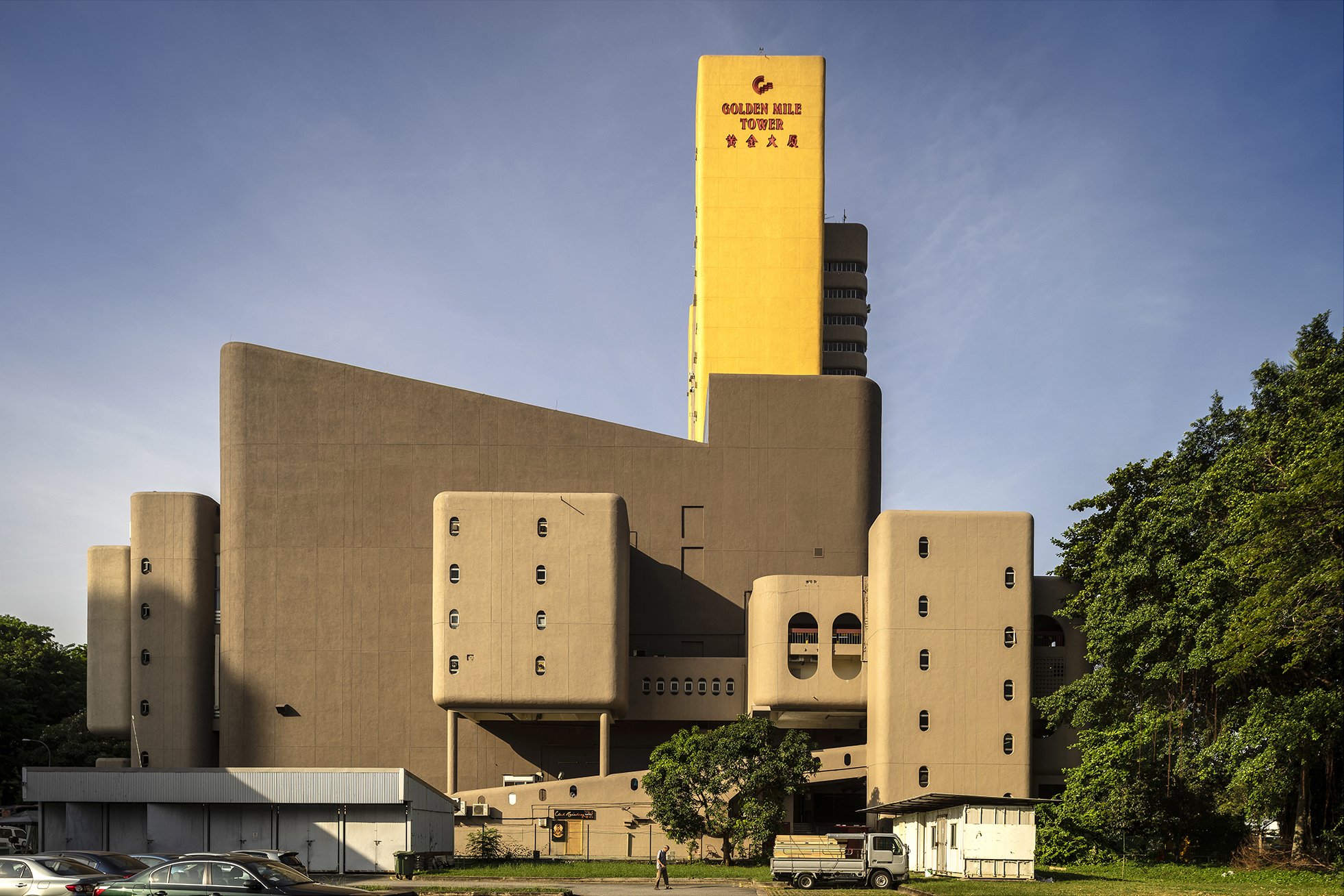Golden Mile Tower
The 22-storey Golden Mile Tower designed by Goh Hock Guan Design team with Tay Joo Teck was completed in around 1976 (the podium was completed and ready for occupation in November 1973). Developed by Chong Gay Theatres Limited, which was also behind the Kallang Theatre and Queenstown Cinema, among other cinemas, the land for the building was sold as part of the Government’s first sale of the site.
One of the few large buildings to be originally finished in raw concrete, its exterior is a composition of volumes of various sizes. These volumes reflect both the programmatic components—for example, the sloping roof expresses the auditorium of the cinema and the 16-storey slab with horizontal bands of windows simply shows that it is an office block—and architectural components, particularly the staircases and service cores. The material used and the volumetric treatment of its massing suggests that this building could be considered as an example of brutalist architecture, just like its illustrious and now-conserved neighbour. The brutalism of Golden Mile Tower, however, comes with a twist. It is softened by rounded edges and corners with what a report calls “circular/capsular segmented design”¹ for all openings.
At its completion, the building housed the 1,896-seat Golden Cinema, which was one of the largest in Singapore and regarded as one of the most luxurious in the region. The cinema was equipped with a 80 by 56 feet curved screen and had a preview room and a VIP lounge. Today, the building houses The Projector, an indie cinema that is popular with young hipsters (disclosure: Docomomo Singapore co-founder and exco member Karen Tan is the co-owner of the Projector).
Location: 6001 Beach Road
Architect: Goh Hock Guan Design team with Tay Joo Teck
Year: 1973 (podium), 1976 (entire development)
Status: Threatened





References:
“A Change from the Square Box with Rounded Edges and Capsular Segmented Design.” Building Materials & Equipment, June (1976), pp. 17-39.
Last modified on 14 January 2023. Written by Chang Jiat-Hwee.

